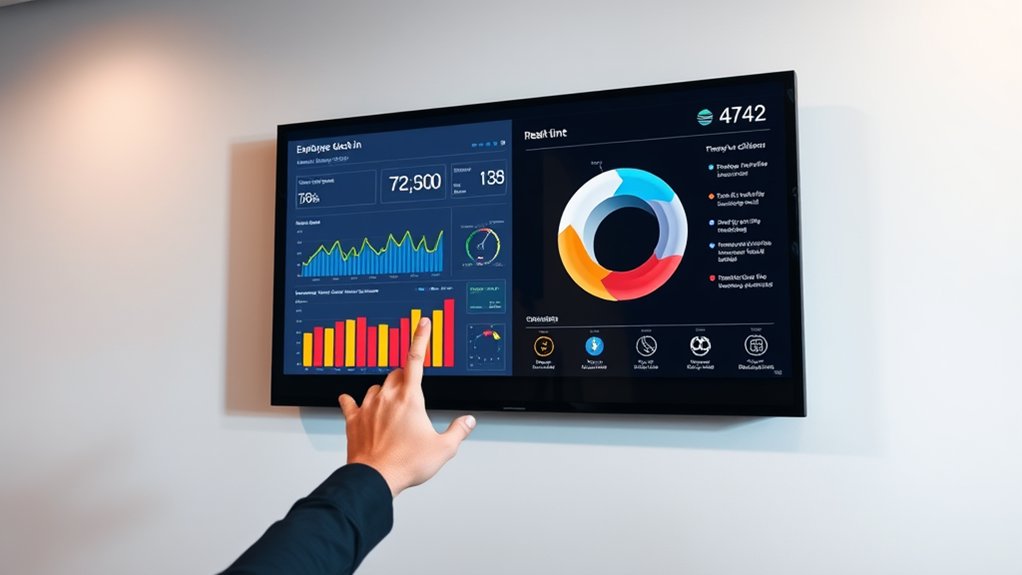Implementing a new payroll time-tracking system involves five essential phases you’ll need to execute methodically. I recommend starting with a thorough needs assessment to document requirements and pain points. Next, select and test your system using a weighted scorecard, followed by creating a detailed implementation timeline. You’ll then need to train staff and establish clear procedures. The final phase focuses on monitoring performance metrics – there’s much more to discover about each critical step.
Assessing Your Organization’s Time-Tracking Needs and Requirements
Before selecting a new payroll time-tracking system, you’ll need to conduct a thorough assessment of your organization’s specific requirements and challenges. Begin by analyzing your workforce structure, including remote workers, contractors, and multiple shifts. I recommend documenting your current pain points, inefficiencies, and compliance gaps.
Consider critical factors like integration capabilities with existing HR software, scalability for future growth, and regulatory requirements in your industry. Evaluate your budget constraints, IT infrastructure, and the level of technical expertise available. Define must-have features versus nice-to-have functionalities to create a strategic framework for your selection process.
Selecting and Testing the Right System for Your Business
Once you’ve documented your organization’s requirements, the next phase involves methodically evaluating potential time-tracking solutions against your criteria. I recommend creating a weighted scorecard to assess each system’s core functionality, integration capabilities, and cost structure.
Select your top three vendors and request extensive demos. I’ll emphasize testing the system rigorously with a pilot group representing different user roles. Pay particular attention to data accuracy, system responsiveness, and user experience.
Don’t skip testing system integrations with your existing payroll and HR platforms. I’ve found that successful implementations hinge on thorough integration testing before full deployment.
Creating a Comprehensive Implementation Timeline and Strategy

After selecting your time-tracking system, I recommend developing a detailed implementation timeline that spans three key phases: pre-deployment preparation, rollout execution, and post-launch stabilization.
I’ve found the most successful implementations follow these critical milestones:
- Data migration and system configuration (2-3 weeks) – Map existing data structures, clean historical records, and configure system parameters
- Staff training and documentation (1-2 weeks) – Train key personnel, create SOPs, develop troubleshooting guides
- Pilot testing (1 week) – Deploy to a small user group, gather feedback, adjust configurations
- Full deployment (1-2 weeks) – Roll out system-wide, monitor adoption, provide real-time support
Training Staff and Establishing New Procedures
With your implementation timeline established, proper staff training becomes the foundation for successful system adoption. I recommend creating role-specific training modules that address each department’s unique needs. You’ll want to develop clear standard operating procedures (SOPs) that outline exact steps for time entry, approval workflows, and exception handling.
I’ve found that designating department champions accelerates adoption by providing peer-level support. These champions should master advanced features and troubleshooting. Establish a feedback loop during training to identify potential issues early. Set clear expectations for compliance and create accountability measures to guarantee your staff follows the new procedures consistently.
Monitoring Performance and Making Post-Launch Adjustments

While the new time-tracking system is operational, I recommend implementing a structured performance monitoring framework to evaluate its effectiveness. I’ll guide you through establishing key performance metrics and adjustment protocols.
- Track system uptime, response times, and user login success rates daily to identify technical issues requiring immediate attention
- Analyze employee adoption rates and common error patterns weekly to pinpoint training gaps
- Monitor payroll processing accuracy and completion times against pre-implementation benchmarks
- Document feedback from managers and employees through surveys and direct interviews
I’ll help you use these insights to make data-driven adjustments, ensuring ideal system performance and ROI.








